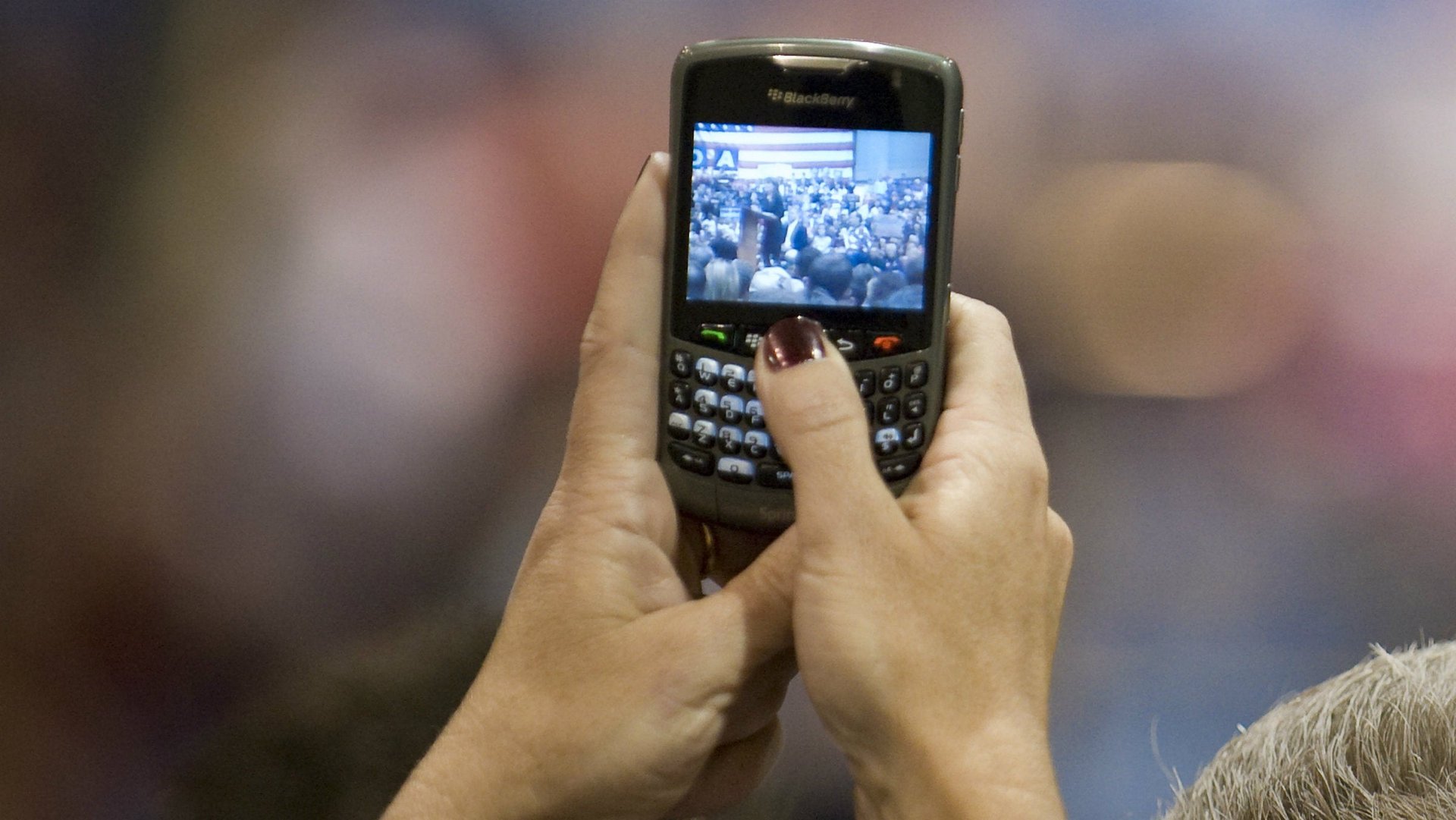Why I hang onto my BlackBerry and other lessons for Apple as it courts women
With the launch of the iPad Mini, Apple is officially coming after female customers. Initial advertisements for the Mini will be rolled out around magazines and TV shows that cater to women. But marketing alone does not a market make.


With the launch of the iPad Mini, Apple is officially coming after female customers. Initial advertisements for the Mini will be rolled out around magazines and TV shows that cater to women. But marketing alone does not a market make.
I’m the kind of woman Apple wants: a working mother who makes most household-purchase decisions and who views her phone as an extension of self. And yet every time the tech giant puts on a grand product “unveiling,” I feel a bit like the kid who sits alone at lunch. I’m the last one hanging on, it seems, to my BlackBerry.
Or am I? While it’s true that BlackBerry maker Research in Motion has seen its US market share plummet, it remains popular in a host of emerging-market countries (paywall). And not just there: In a survey of 1,000 UK consumers released this past summer, the BlackBerry was the most popular smartphone, preferred by 21% of women against 15% of men. Even among Americans, while iPhones are more or less equally popular with both sexes and Android is a male preserve, those few remaining BlackBerry owners are much more likely to be women.
The tablet market sees similar divide. Quartz’s story last week explains what’s motivating Apple: “Ownership of the bulky 10-inch iPad is 53% male, while Amazon’s Kindle Fire—similar in size and weight to the iPad Mini—enjoys a 57% female audience, at least in the US.”
As both an e-reader and iPad user, I can see why. To women, the latter might feel more like a toy (it is a great babysitter, though). Meanwhile, my loyalty to the BlackBerry also has a lot to do with my gender, a factor worth considering as competition heats up.
Here’s the biggest reason: I have nails. Long ones. Picture antlers splayed over the iPhone virtual keyboard, no connection between my touch and the letter or number I really want. Autocorrect doesn’t help. The other night, to prove my point to a fanboy, I started to type “I hate…” and it came out “linear.”
Here’s another: I have a baby. She likes to be held. I’m still nursing. That leaves me with one hand, which leaves me with one choice: a tactile keyboard.
And another: I cheat. In my efforts to multitask and not waste time, I constantly cut and paste portions of emails into others. That goes for directions among colleagues to instructions like bus pickup and recipes for nannies, neighbors, and the husband. Toggling, all the while, among email, text, Facebook, and Twitter.
Also: Battery life. I don’t know where the estimates of the iPhone’s superior battery power come from, but I don’t believe them. I have spent entire vacations with iPhone users and they always run out long before I do—we schedule mealtimes around when they need to crawl under tables to find an outlet even as I keeping using my phone. Even Hurricane Sandy generated some speculation on Twitter over which will weather the storm better.
Finally: I’m cheap. I don’t understand why people throw hundreds of dollars down on a phone when they know another Apple press conference can never be far away.
Notice I have not said a word about the thousands of games I want to play. I don’t care if the devices are pink or have rhinestones or polka dots. The “girly look” is a mistake a lot of tech companies are making in their efforts to reach women, notes Nikki Barton,vice president of user experience design for smart devices at Nokia. “…women tend to place less emphasis on having so-many thousand apps or impressive speeds and feeds. Technology matters, but women don’t really see their phone as a gadget,” she said. “To women, their smartphone is an … appendage that makes it easier to socialise, manage schedules, order groceries, find directions, plan a bus route … From their phones, women look for a holistic experience.” (No coincidence, she’s behind the much-lauded Lumia 920, which, reputedly at least, works with long nails and fingers covered in gloves. For what it’s worth, I also tried a Samsung Galaxy S3 the other night and thought it did pretty well with my nails.)
My guess is many women don’t feel they are getting exactly what they want from their dizzying array of devices right now, a well-trod step in the acceptance of not having it all. It would be easy to see my tastes and grievances as oddities, but show me a world that consumes technology uniformly. In fact, the unique challenges of the female consumer should be among the lowest thresholds for technology companies to meet—and every other business.
Trust me, our nails are really going to be an issue, especially if the touchscreen’s ubiquity continues beyond personal devices. And women could go on and on about how other products fail us every day. (Leaning back in an office chair? The manufacturer didn’t think about long hair getting caught in the screws. And just consider the upper body strength needed to close a station wagon trunk.)
It’s crucial to get it right. Women control 65% of global spending and more than 80% of US spending. Tech companies’ sales and marketing can intensely court women but the product engineers can’t be too far behind. After all, the digital-device wars might just depend on who wins the battles for the sexes.